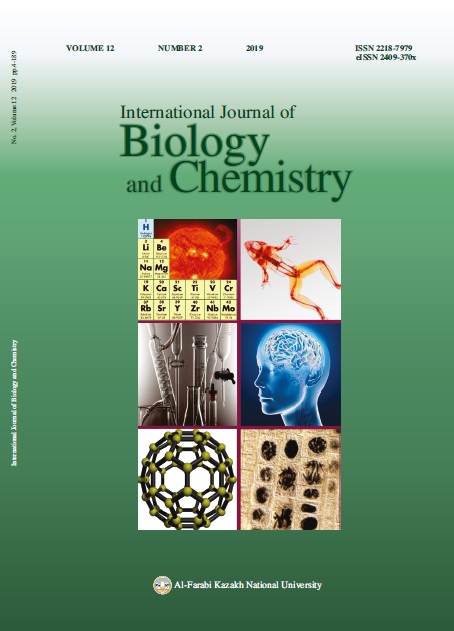Systematic analysis of flora of Atyrau city
DOI:
https://doi.org/10.26577/ijbch-2019-v2-3Abstract
Currently, a great deal of attention is attracted to the study of regional flora as part of the solution to the problem of the study and conservation of biodiversity. Complete information on the composition of the flora of a particular region is important; it allows to establish the structure and genesis of its
components, identify individual characteristics, restore the history of formation and trends. Therefore, the study of the flora of any region will always be relevant. The most important qualitative indicator of the flora it is a systematic structure. This article presents the results of a study obtained during a systematic analysis of the flora of Atyrau. It was revealed that the flora of the study area includes 27 families, of which 10 leading families make up 73.4% of the total species composition. The leading families in this taxonomic composition are the following families: Chenopodiaceae (90 species, 26 genera), Asteraceae (70 species, 32 genera), Poaceae (55 species, 30 genera). Dominant genera are: Artemisia, Astragalus, Salsola. Endemic species in the city of Atyrau revealed – 8, rare species – 6. Flora was studied using geobotanical and floristic research methods, the main of which was route-reconnaissance. Based on
the analysis of literature data, viewing the herbarium of KazNU, materials collected in the framework of the scientific and technical program 0200/PTF14 on the topic: “Risk assessment of the impact of anthropogenic impact on the population of the Kazakhstan part of the Caspian region”, as well as their own research on the study and collection of plants in Atyrau, a list of flora has been compiled, including 534 species belonging to 243 genera and 57 families.
Downloads
How to Cite
Issue
Section
License
ааа





